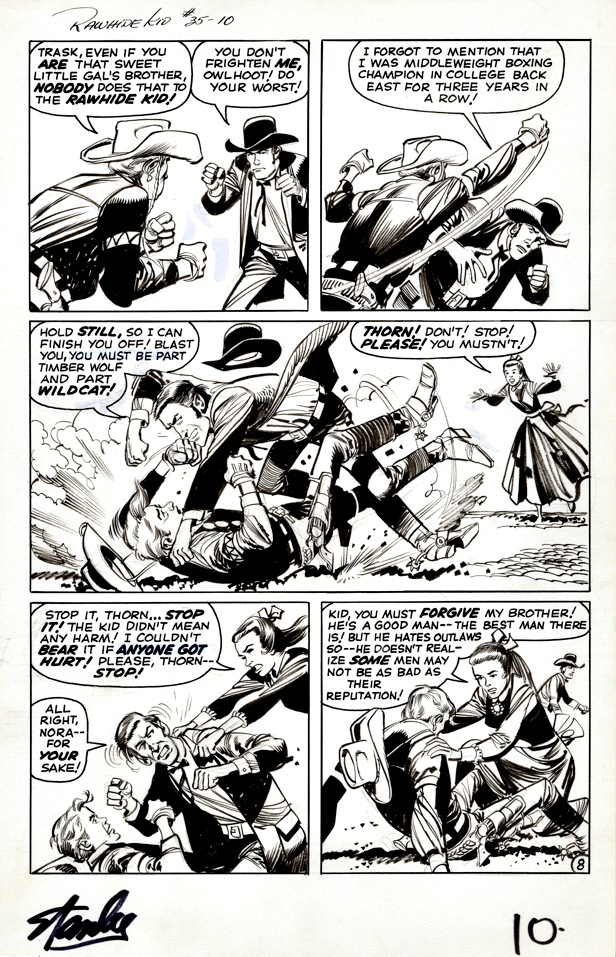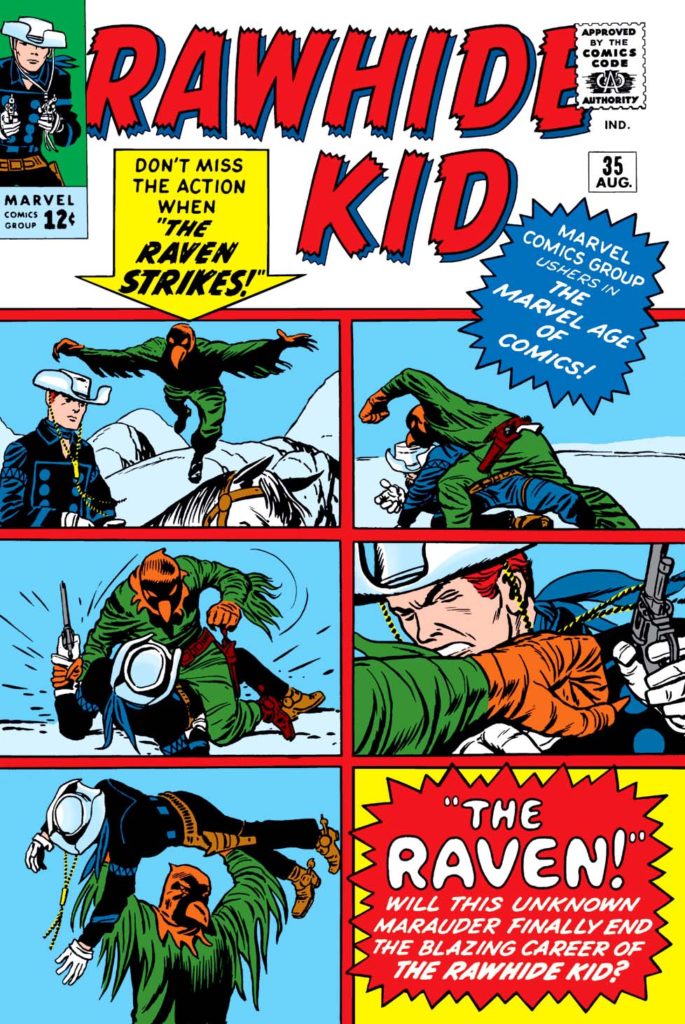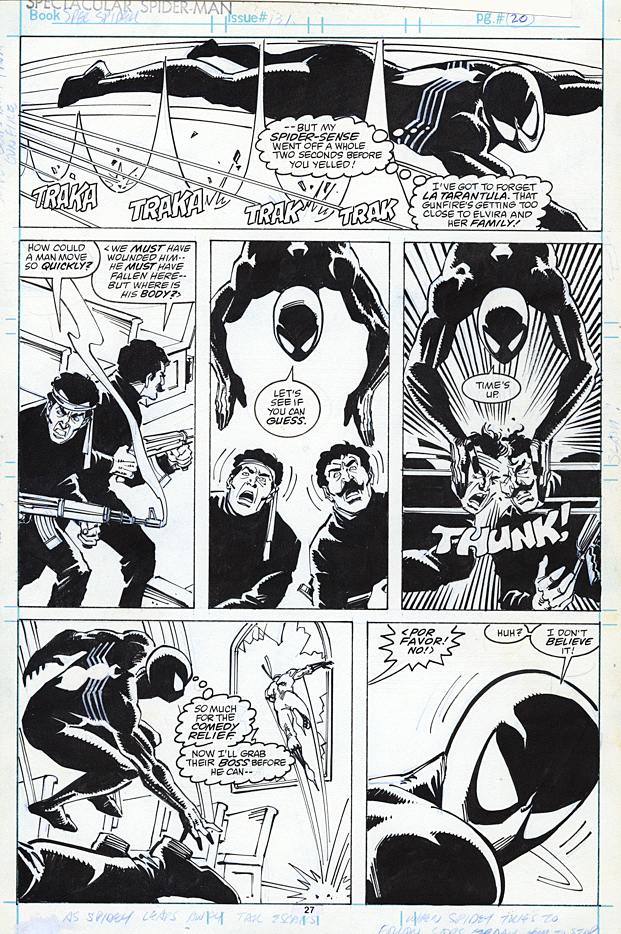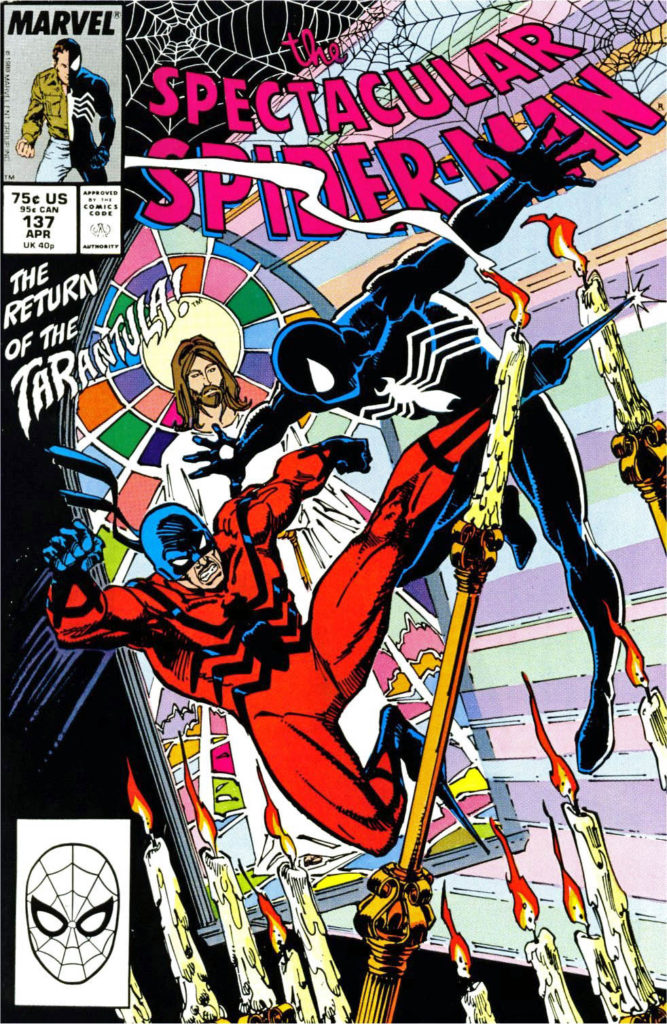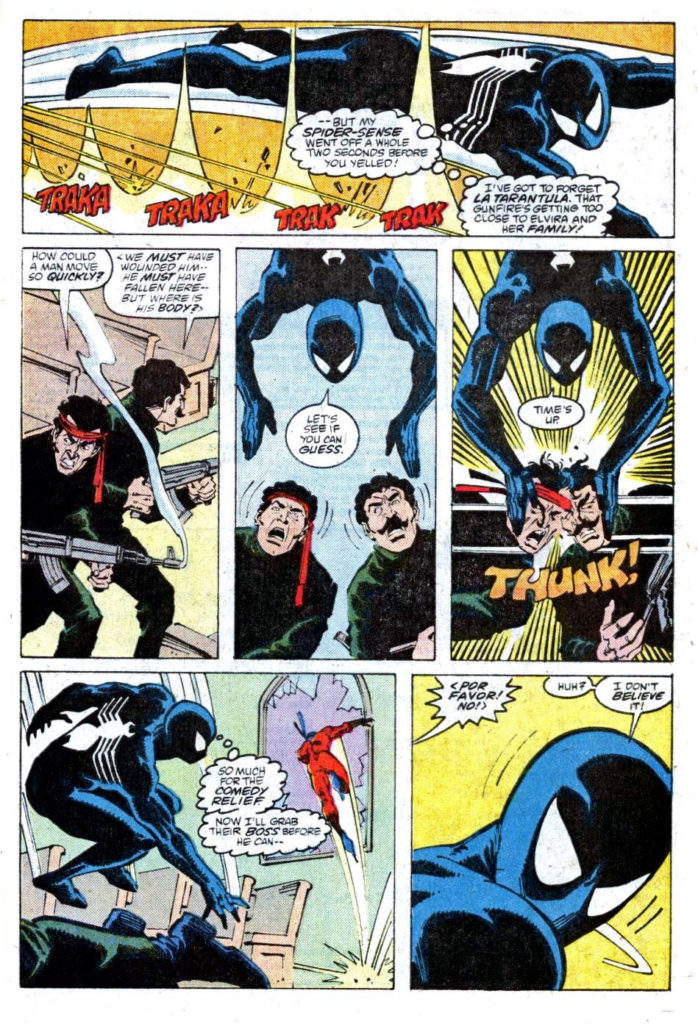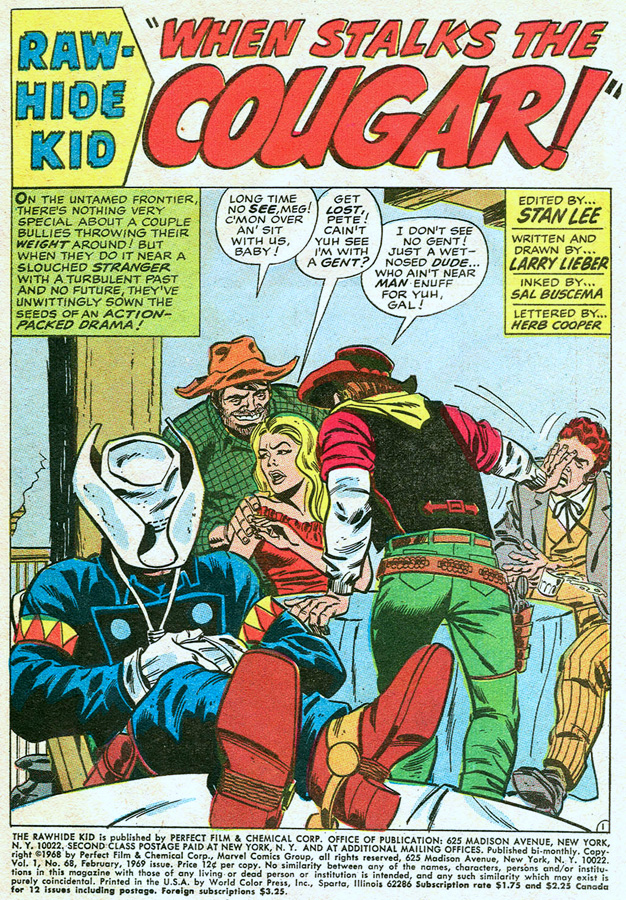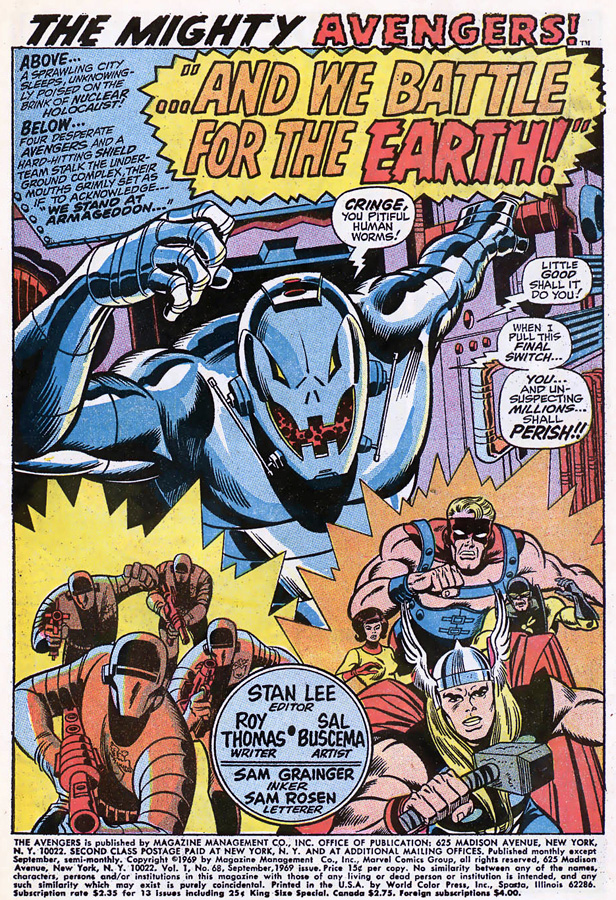Jack Davis — Rarity
Rawhide Kid #35, August 1963
Jack Davis and Stan Lee only worked together a handful of times. Jack drew six Rawhide Kid stories at the dawn of the “Marvel Age,” after Jack Kirby became too busy designing and developing Marvel’s earliest superheroes.
Davis’ cartoony style is unmistakable, and definitely a departure from the typical Marvel western art line-up that included Kirby, Dick Ayers and Larry Lieber, among others.
These Davis Western stories are some of the final color comic book stories to he ever drew. Shortly after their publication, Davis returned to Mad Magazine and became a Mad mainstay for more than 20 years.
And of course, we can’t forget the Time Magazine covers. The TV Guide covers. The film posters. The advertising work. Trading cards for Topps. Etc.
Just a few things to occupy the drawing board of one of America’s most talented and recognizable commercial illustrators.
Too bad Stan couldn’t persuade Davis for a bit more work. I’m not sure how it would have worked out on the traditional superhero stories * but a few short pieces for Not Brand Echh would have been right on the nose.
(*Well, actually I’m certain it would have been jarring to see Jack on “straight” superhero stories…)

